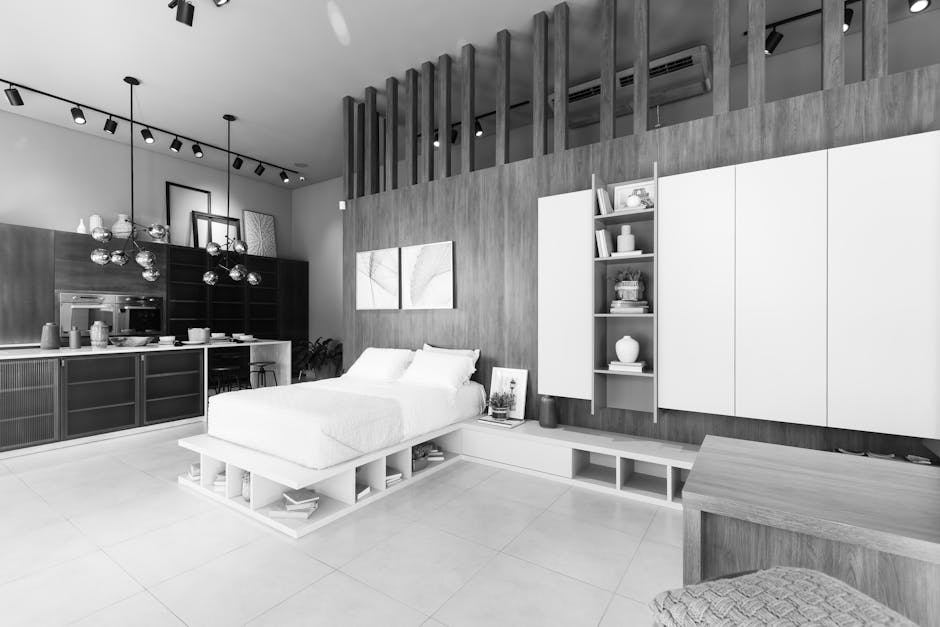## Top Home Improvement Trends in New Zealand for 2025
### Introduction
In 2025, home improvement in New Zealand is all about merging modern innovation with timeless values. As we journey into a future that values sustainability, technology, and personal style, New Zealand homes are transforming into spaces that reflect these ideals. This article explores the key trends that are shaping both new builds and renovations, highlighting the priorities of Kiwi homeowners.
### Eco-Friendly Materials and Energy Efficiency
A growing number of homeowners in New Zealand are prioritizing eco-friendly materials and energy-efficient solutions. Sustainable options like cross-laminated timber (CLT) and hempcrete are gaining popularity due to their low environmental impact. These materials not only enhance the aesthetic appeal of homes but also contribute to their durability.
Energy efficiency has moved to the forefront of home design. Homeowners are installing high-performance windows and upgrading insulation. Solar panels are becoming a standard feature, as they significantly reduce energy bills and increase property value. Another innovative solution is the incorporation of green roofs. These living rooftops provide insulation, reduce stormwater runoff, and improve air quality.
These eco-friendly approaches reflect a broader shift towards sustainable living, ensuring homes are prepared for the future. Adopting these strategies not only benefits the environment but also proves economically advantageous in the long run.
### Nature-Connected and Biophilic Design
Incorporating nature into home design has become essential. Biophilic design, which focuses on bringing the outdoors inside, is trending in New Zealand homes. Large windows, indoor plants, and natural light are key elements of this design style. They create a tranquil environment that promotes well-being and relaxation.
Outdoor spaces are being transformed into integral parts of the home. Whether it’s a deck for entertaining or a garden as a private retreat, these areas offer a seamless connection with nature. The indoor-outdoor flow is vital, enhancing the living experience by inviting the outside in.
This connection with nature isn’t just about aesthetics; it’s also about improving mental health. Studies have shown that environments with natural elements can reduce stress and increase overall happiness. By integrating these features, homes become havens of peace and comfort.
### Versatile and Open-Concept Layouts
Life is increasingly dynamic, and homes need to accommodate this change. Versatile, open-concept layouts are highly sought after for their flexibility. These spaces can adapt to various functions, from working at home to entertaining guests.
Movable partitions and multipurpose furniture are essential tools in creating adaptable spaces. They allow a room to transform effortlessly, addressing the shifting needs of a household. This adaptability is especially valuable for multi-generational families, who need homes that cater to different life stages.
Open-plan designs also facilitate better communication and interaction, making homes more connected and lively. By knocking down walls, families can enjoy spaces that are spacious and inviting.
### Smart Home Innovations
Technology is becoming increasingly integrated into our daily lives, and homes are no exception. Smart home technology is revolutionizing how we live, with automated systems for lighting, climate control, and security becoming standard.
Smart appliances, such as refrigerators and ovens controlled by voice or smartphone, offer unparalleled convenience. Touchless fixtures add a level of hygiene and efficiency previously unseen. These innovations not only simplify daily tasks but also enhance security and energy efficiency.
Homeowners are drawn to these features because they align with a tech-savvy lifestyle. They make homes smarter, more efficient, and more secure, meeting the demands of modern living. As technology continues to evolve, these innovations will become even more integrated into New Zealand homes.
### Expression Through Color and Patterns
In 2025, there’s a bold shift towards using color and pattern to express personality in home design. Gone are the days of purely neutral palettes. Now, homeowners are embracing vibrant feature walls and colored cabinetry to make a statement.
Patterned furnishings, from rugs to wallpaper, add depth and interest to interiors. These elements allow homeowners to create spaces that are uniquely their own, reflecting personal tastes and creativity. This trend toward individualization ensures that homes are not just functional but also personal havens.
Incorporating bold colors and patterns doesn’t mean sacrificing cohesion or style. With careful planning and thoughtful selection, these elements bring homes to life, showcasing personality and flair.
### Minimalist Aesthetic
Even with a love for bold colors, minimalism remains a strong trend. The appeal of simple lines and uncluttered spaces lies in their timeless elegance. By focusing on quality over quantity, homes can be both beautiful and functional.
Minimalist design emphasizes clean lines, neutral colors, and open spaces. It prioritizes functionality, ensuring that every piece serves a purpose. This approach creates a sense of tranquility and order, making homes feel inviting and warm.
Finding a balance between minimalism and personal expression is key. By integrating meaningful pieces and keeping decor purposeful, homes can achieve a minimalist style without losing character.
### Resurgence of Vintage and Retro Styles
Vintage and retro styles are making a strong comeback. Elements inspired by mid-century and heritage designs add character and warmth to modern New Zealand homes. These styles evoke a sense of nostalgia, offering comfort and familiarity.
Incorporating vintage furniture or retro color schemes can refresh a space and make it feel unique. These elements give homes a distinctive look, setting them apart from cookie-cutter designs.
This trend is about mixing the old with the new. By celebrating past styles while incorporating modern conveniences, homeowners can create spaces that are both timeless and contemporary.
### Conclusion
As we look towards 2025, New Zealand’s home improvement trends reflect a shift towards sustainable, tech-savvy, and personalized living spaces. From embracing eco-friendly materials to integrating smart technologies, these trends are reshaping how we live.
Whether you are planning a renovation or a new build, staying informed about these trends can help you create a home that is both stylish and practical. These changes promise a future where homes are not just places to live but spaces that enhance our quality of life.
For more insights on home improvement trends and tips, feel free to visit our website.












Leave a Reply